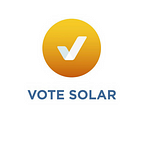Rising to Meet the Challenge of Solar for All
Who doesn’t love a good challenge? The folks at the US Department of Energy’s SunShot Initiative sure do, and by the looks of things there are a lot of teams in the country who love a challenge, too.
Late last year, the SunShot Initiative announced its Solar in Your Community Challenge. This challenge involves seed money, funds for technical assistance, and prizes totaling $5 million — all for teams that can come up with innovative, replicable, and scalable business models that can unlock solar access for low- and moderate-income communities. The Solar in Your Community Challenge is being administered in partnership with SUNY Polytechnic Institute.
In February of this year, SUNY announced that 48 teams among the Challenge’s early applicants had been selected to participate. Not a bad start! But it gets even better: after reviewing all the applications, SUNY announced in April that 172 teams from all over the country have been selected to participate. Teams are developing projects and programs in nearly every state in the nation, working on close to 300 MW of shovel-ready solar projects that will deliver the benefits of solar to low- and moderate-income communities.
Some participating teams received up to $60,000 in seed money to get their projects off the ground. Other teams received vouchers for $10,000 worth of technical assistance consulting. Teams will compete for another $1 million worth of prizes at the end of the challenge, including a $500,000 grand prize. We’re rooting for these 172 teams!
Just who are these fearless competitors? They’re folks all across the country who have vision, creativity, and the drive to break down some of the challenging barriers facing low- and moderate-income communities who desire clean solar energy.
For example, the Shared Solar Collaborative in Oakland, California will leverage the ability of a community church to host a large solar array. Forty percent of the power from the array will serve low-income households in the community under a community shared solar structure. This project will serve as an example of a community-owned project. So not only will the community experience lower energy bills, they also will build community wealth and community empowerment.
Or take the Solar Working Group of Southwest Virginia. This intrepid group is taking on the challenges that low-income communities in Virginia’s coal country face by transforming the local economy from one based on coal mining to one based on clean energy. Their project will place solar on affordable homes in a senior community and on a local school, where students’ STEM education will be enhanced with solar education. Senior citizens will have more affordable energy bills, the school will save money and reinvest in educational programming, and area students will have more options for future careers in clean tech.
And consider the efforts of the HBCU Clean Energy Consortium. This group’s innovative, multi-pronged project will harness the efforts of eight Historically Black Colleges and Universities to promote the adoption of solar on HBCU campuses, and to test innovative solutions for making solar accessible to LMI families in the communities that HBCUs call home. The HBCU Clean Energy Consortium will leave no stone unturned in the hunt for solutions for delivering clean energy to low-income and minority families. Among other things, the group will engage in educational campaigns, community solar development, workforce training, and even start solar manufacturing and installation/weatherization businesses.
These are just three of the 172 inspiring teams that will spend the next 18 months finding creative yet replicable methods to break down the barriers for delivering the benefits of solar to low- and moderate-income communities. Check out more team plans at www.solarinyourcommunity.org. We’re sure the folks at SunShot and SUNY will have a hard time picking the winners!
And if you’re not part of the Solar in Your Community Challenge, there are still plenty of ways to get involved. Please check out the Low-Income Solar Policy Guide that we developed in partnership with GRID Alternatives and the Center for Social Inclusion for a menu of policy tools, solutions, and inspiring case studies about low-income communities going solar!
Melanie Santiago-Mosier is the Program Director, Low-Income Solar Access at Vote Solar.
